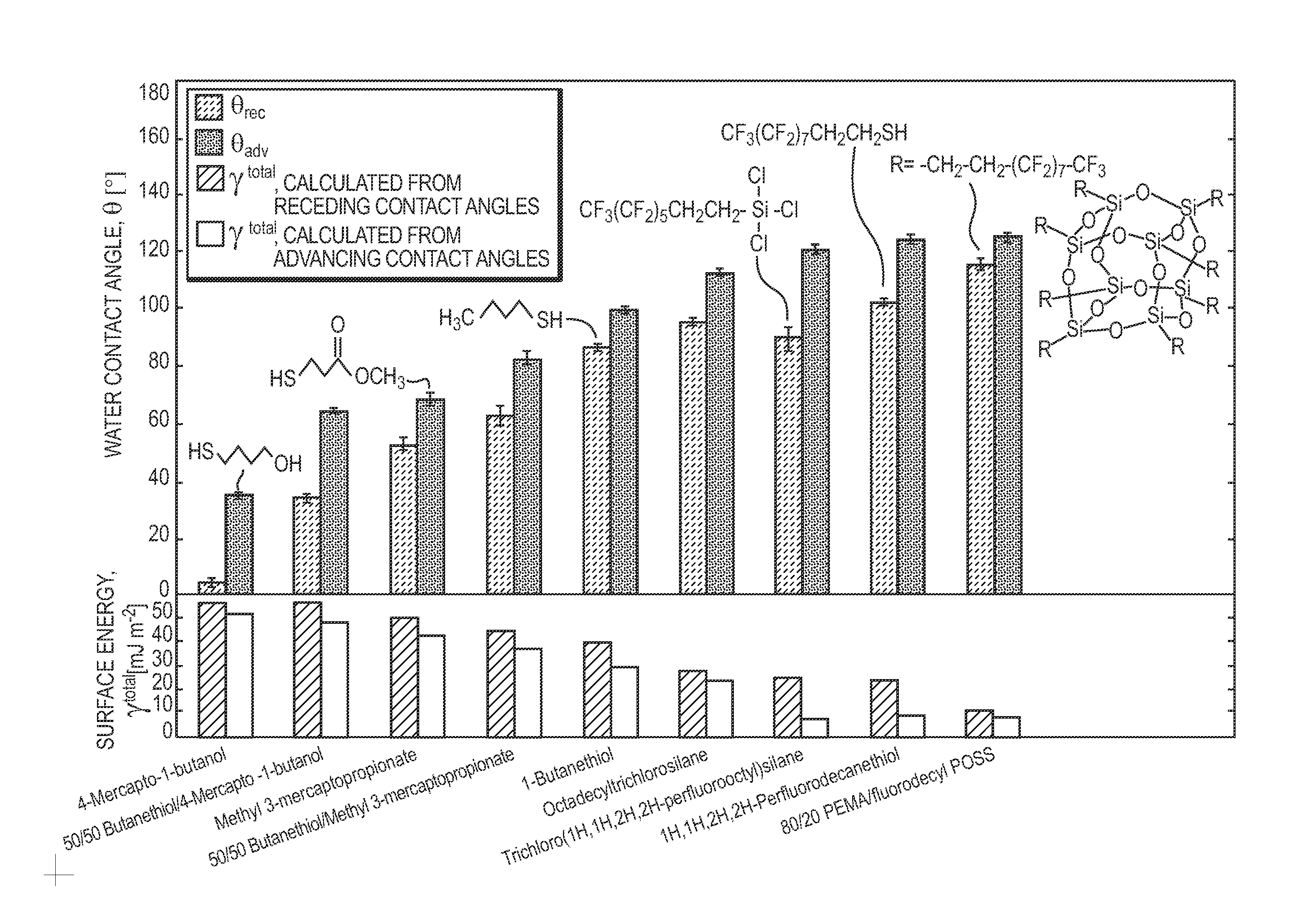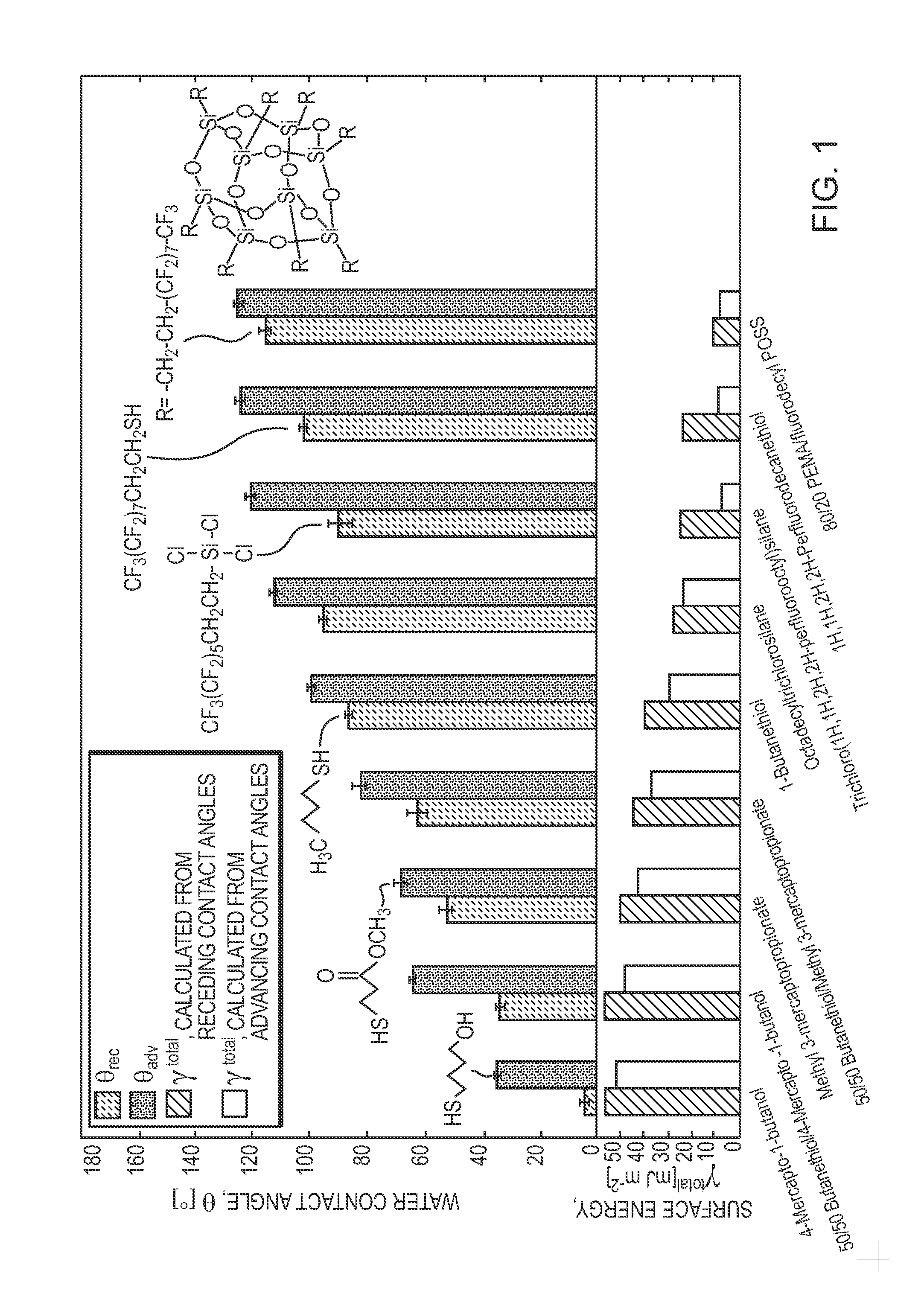Articles and methods for reducing hydrate adhesion
a technology of adhesion and articles, applied in mechanical equipment, earthwork drilling and mining, borehole/well accessories, etc., can solve the problems of natural gas hydrates, operations to stop, many challenges to overcome,
- Summary
- Abstract
- Description
- Claims
- Application Information
AI Technical Summary
Benefits of technology
Problems solved by technology
Method used
Image
Examples
experimental examples (
INCLUDING CONSTRUCTIVE EXAMPLES)
[0076]For the hydrate adhesion strength measurements, tetrahydrofuran (THF) hydrate was used as a model system because THF is completely miscible in water and forms hydrate at atmospheric pressure and temperatures below 4.4° C. for a solution of 19.1% THF (by weight) in water. THF hydrate adhesion was tested using a custom-built adhesion testing apparatus housed in a glove box containing a nitrogen environment. A solution of 19.1 wt. % THF in DI water was poured into glass cuvettes and frozen to the test substrates. The liquid columns were frozen for 2 hours at −15° C. to yield an array of hydrate columns encased in cuvettes and adhered to the test substrates. The substrate temperature was monitored using a thermocouple attached to the top of one of the substrates. To minimize frost formation on the test substrates and apparatus, the relative humidity was kept below 5%.
[0077]The force required to detach each hydrate column from its test substrate was ...
PUM
 Login to View More
Login to View More Abstract
Description
Claims
Application Information
 Login to View More
Login to View More - R&D
- Intellectual Property
- Life Sciences
- Materials
- Tech Scout
- Unparalleled Data Quality
- Higher Quality Content
- 60% Fewer Hallucinations
Browse by: Latest US Patents, China's latest patents, Technical Efficacy Thesaurus, Application Domain, Technology Topic, Popular Technical Reports.
© 2025 PatSnap. All rights reserved.Legal|Privacy policy|Modern Slavery Act Transparency Statement|Sitemap|About US| Contact US: help@patsnap.com



